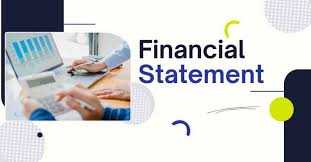Overview:
If you're an entrepreneur or investor, or just someone looking to learn more about a company, financial statements are your friend. But to anyone without experience, they might seem like a confusing maze of numbers and terminology. Here's a guide on how to read financial statements like a pro, even if you're not an accountant.
Why Financial Statements Matter:
Financial statements are the business report card. They explain the story of how a company is doing, where it's investing money, and how much value it's producing. The three main statements you'll want to become an expert in are:
- Income Statement (Profit Loss)
- Balance Sheet
- Cash Flow Statement
Each one provides a different window into the well-being of a business.

Income Statement: Monitoring Profitability:
What it indicates: Revenue, expenses, and profit for a duration (typically quarterly or annually). Most Important Parts:
- Revenue (Top Line): Overall sales or income.
- Cost of Goods Sold (COGS): Direct cost of making the product or service.
- Gross Profit: Revenue - COGS.
- Operating Expenses: Salaries, rent, advertising, etc.
- Operating Income (EBIT): Earnings before interest and taxes.
- Net Income (Bottom Line): Last profit after all expenses, taxes, and interest.
Pro Tips:
Check net profit margin (Net Income ÷ Revenue) to gauge efficiency. Look at year-over-year figures and year end accounts to identify growth or decline and be aware of one-time gains or losses that may distort results.
Balance Sheet: The Snapshot of Finance:
What it reveals: Assets, liabilities, and equity at a particular moment. Important Parts include:
- Assets: What the business owns (cash, inventory, property).
- Liabilities: What it owes (loans, accounts payable).
- Equity: Owner's portion after subtracting liabilities from assets.
- Simple Formula: Assets = Liabilities + Equity
Pro Tips:
Look at the current ratio (Current Assets ÷ Current Liabilities). A ratio 1 indicates strong short-term liquidity. Examine debt-to-equity to understand how leveraged the business is and look for trends in accounts receivable or inventory—increasing figures are a warning sign.

Cash Flow Statement: Where the Money Goes:
What it indicates: Real cash inflow and outflow broken down to operations, investing, and financing. Major Sections are Operating Activities: Cash from day-to-day business activities, Investing Activities: Acquiring/selling assets (such as equipment or investments) and Financing Activities: Issuing capital, paying dividends or debt.
Pro Tips:
Positive cash flow from operations is essential—it's the pulse of a thriving firm. Look for firms that demonstrate profitability on the income statement but have negative operating cash flow—it can indicate aggressive accounting.
Key Takeaways:
- Know the 3 Main Statements
- Check if the Business is Profitable
- Follow the Cash Flow
- Watch for Trends Over Time
- Cash Matters More Than Profit
Blogged by: BDGAGSS











